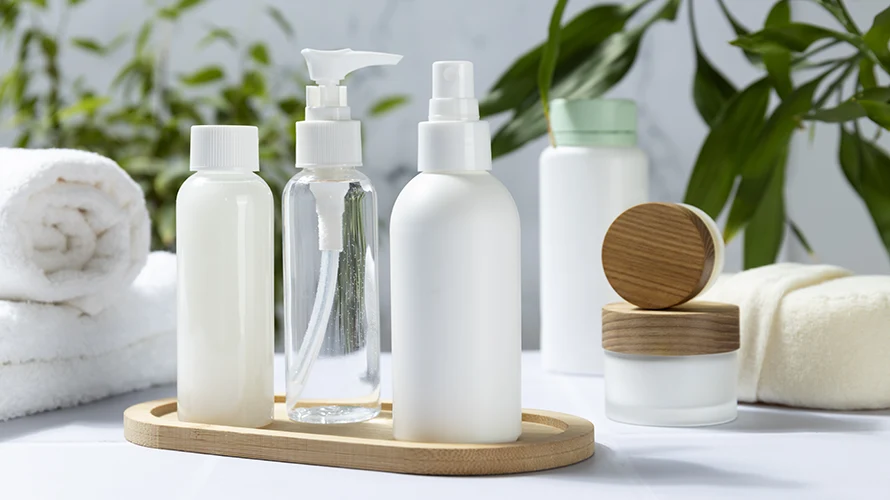How to Start a Skincare Line with No Money in 11 Steps

Founder of UKPACK, Chief Packaging Designer with 18 years of experience, Red Dot Award Winner
Specialize in custom, innovative, and sustainable packaging solutions for cosmetics, skincare, personal care, hair care, food and beverage, and more.

- שלב 1. קבע מוצרי טיפוח במחירים נוחים ליצירה במסגרת התקציב שלך
- שלב 2. השקיעו יותר זמן במחקר
- שלב 3. פשט את התוכנית העסקית שלך
- שלב 4. צמצם את ההוצאות על פריטים לא חיוניים
- שלב 5. הקצה מינימום של $2000 כמימון ראשוני
- שלב 6. נקוט משנה זהירות בעת רכישת משאבים
- שלב 7. בחר באסטרטגיית מכירות חסכונית כדי לקדם את המוצרים שלך
- שלב 8. בחירת תהליך ייצור אופטימלי
- שלב 9. יצירת באז
- שלב 10. בחר באריזת מלאי
- שלב 11. הרחב את הרשת שלך
- סיכום
Starting a skincare line without any funds doesn’t imply operating the business entirely without money. Instead, you can initiate it with a restricted budget, minimize unnecessary expenses, optimize your sales approach, and gradually expand.
Below are 11 straightforward measures to commence a skincare line without financial resources, particularly beneficial if you’re starting from home.
Before delving into the subject, please bear in mind that managing a skincare line on a limited budget necessitates acknowledging the substantial amount of effort and dedication required to grow your business.
Step 1. Determine Affordable Skincare Products to Create within Your Budget
Within the realm of skincare products, such as face packs, moisturizers, lip balms, and anti-aging creams, there exists a variety of options, including organic, vegan, natural, and others. It is crucial to select a product that is financially feasible for you.
If you are starting out or new to this field, organic or natural skincare products would be more attainable. Numerous do-it-yourself (DIY) resources can be found online to create such products.
If you possess formulation knowledge, you can utilize stock formulations as a starting point. These formulations can be accessed through searchable databases, allowing you to make minor adjustments to differentiate your product from others.
Nevertheless, there are certain drawbacks to this approach. Luisa Fanzani, the founder of LFCLab, highlights in her blog post about launching a cosmetic line without funds that using stock formulations lacks product uniqueness, as they are accessible to anyone. Therefore, it is advisable to focus on creating unique product ingredients rather than merely modifying stock formulations.
Furthermore, when utilizing stock formulations, it is essential to check for any limitations regarding trademarks, copyrights, and patent rights associated with the formulation.
Step 2. Invest More Time in Research
A valuable tip for launching a skincare line with limited resources is to allocate ample time to research. Prior to selecting a product, it is essential to conduct thorough analysis regarding the types of skincare products thriving in the market, your target audience, competitors, and what sets their products apart.
Once you have gathered all the necessary information, create a detailed plan that outlines the specific products you intend to develop, their pricing strategy, and the aspects that differentiate them from other brands.
It is crucial to emphasize that this step is pivotal in initiating your skincare business. Since it is a planning phase, exert maximum effort to gather all the required information.
Step 3. Simplify Your Business Plan
Regardless of whether you are launching a skincare line with minimal funds or substantial capital, having a business plan is essential. This document serves as a reminder of your objectives. It doesn’t require complex thinking; simply jot down fundamental details such as:
- Your action plan
- Estimated revenue
- The type of skincare line you are establishing
- Identification of competitors
- Manufacturing approach
- Sales and marketing strategy
During the initial stages, strive to maintain simplicity in your business plan. As your business begins to flourish, you can gradually incorporate additional necessary points.
Step 4. Minimize Expenditure on Non-Essential Items
During the early phases of launching a brand, it’s natural to feel excitement and the urge to acquire various items, even if they hold little relevance to your business. For instance, purchasing a brand-new Mac or setting up an elaborate office space may seem enticing. However, it is crucial to resist the temptation and focus only on acquiring items that truly contribute to your business’s progress. Strive to minimize expenditure on non-essential items at all costs.
Step 5. Allocate a Minimum of $2000 as Initial Funding
While it may seem like a significant amount, saving money before starting a skincare business is crucial. Setting aside at least $2000 initially enables you to cover essential expenses such as equipment, labeling and storage materials, insurance, and business registration costs. These costs typically amount to around $1000 – $1500, with miscellaneous expenses ranging from $200 – $300, depending on the circumstances.
It’s important to note that this budget recommendation is suitable for those starting their business from home. However, it does not include costs associated with private label manufacturers. If you decide to engage a private skincare label manufacturer, you may need to set aside at least $5000 or more.
Furthermore, the budget requirements vary based on the scale of your business ambitions. If your goal is to sell locally or support your community, or if you view it as a hobby, you can operate with a limited budget. However, if your aspirations are grander, raising capital, obtaining loans, hiring additional staff, and dealing with various financial matters may be necessary.
Step 6. Exercise Caution When Procuring Resources
If you are embarking on a skincare line without funds, this step is of utmost importance. Always strive to find ways to reduce costs or obtain required materials at an affordable price.
For instance, consider purchasing raw materials from wholesale marts rather than regular shopping malls. Buying wholesale often provides maximum discounts, allowing you to save money.
Opt for recycled materials for packaging and storage purposes. They are not only cost-effective but also environmentally friendly.
Keep your product labeling simple and meaningful for customers. The more customized and vibrant your labels are, the more expenses you may incur. During the initial stages, adopting a minimalistic style not only saves money but also gives your product a clean and appealing appearance.
When it comes to acquiring equipment, avoid compromising on quality. Items such as mini whisks, glass rods, pH meters, test strips, and disinfectants are crucial for day-to-day operations. Therefore, ensure that you invest in reliable and durable products.
Step 7. Opt for a Cost-Effective Sales Strategy to Promote Your Products
Once your skincare products are prepared and everything is in order, it’s time to initiate the selling process. There are two approaches you can consider: partnering with a retailer or selling directly.
Choosing to collaborate with a retailer in the early stages can be more cost-effective, as the retail business entails extensive customer interaction and increases the likelihood of customers noticing your product. This is particularly advantageous when targeting local markets or stores, as it provides ample opportunities to engage with customers and retailers, gaining valuable insights about their perceptions of your product.
Alternatively, you can opt to sell the products yourself. This can be achieved by establishing an online shopping website or leveraging social media platforms such as Facebook, Pinterest, or YouTube. By utilizing both approaches, you can gradually enhance your brand’s visibility over time.
Step 8. Selecting an Optimal Manufacturing Process
The choice of your manufacturing process depends on two crucial factors: your available funds and the objectives of your business. Generally, there are two main approaches: producing your own products or hiring a chemist.
With a limited budget, you can initiate the manufacturing process from the comfort of your home. This entails acquiring some equipment, which typically costs a few hundred dollars. Here is a list of essential equipment for making skincare products at home:
| Equipment | Average Price of unit |
|---|---|
| Glass beaker set | $25 – 30 |
| Microbial test kit | $30 – 35 |
| Mortar and pastel | $10 – 13 |
| Pipette | $0.25 – 0.30 |
| Spatula | $0.30 – 0. 35 |
| Dispensing spoon set | $1 – 2 |
| Lab Thermometer | $14 – 15 |
It is important to emphasize that when producing skincare products at home, you must ensure your workspace is clean and sterile. Although manufacturing cosmetics from home is not against the law, the FDA provides “Good Manufacturing Practice Guidelines/Inspection Checklist” to help you maintain a safe manufacturing process.
Alternatively, you can consider hiring a cosmetic manufacturer. However, this option may incur higher costs, and it is crucial to conduct thorough research before making a selection.
Another cost-effective option is to collaborate with other artisans who can create products according to your requirements at an economical price point. This approach allows you to establish connections and manufacture your products economically.
Step 9. Generating Buzz
Promotion plays a vital role in the skincare industry as it helps attract an audience. However, marketing can be costly, often requiring significant investment. Nevertheless, with a limited budget, you can effectively promote your products using the following strategies:
- Collaborate with Micro-influencers: Approach micro-influencers on platforms like Instagram, YouTube, Facebook, or TikTok. Social media sites, particularly Instagram, offer tremendous potential for promoting your skincare brand. Even renowned brands such as Olay and Neutrogena utilize Instagram to engage with their audience.
- Maintain an Active Social Media Presence: Stay socially active on various social media platforms by sharing updates about your products or upcoming releases in a timely manner. This is an excellent and cost-effective way to promote your brand.
- Participate in Events or Exhibitions: Set up stalls at relevant events or exhibitions, and offer freebies to attract and engage with potential customers during the initial stages.
- Establish an Online Presence: If you have sufficient funds and can manage your time effectively, consider setting up your own website or purchasing a ready-to-use online store through platforms like Shopify or WIX.
By implementing these strategies, you can generate buzz and promote your skincare brand in a cost-effective manner.
Step 10. Opt for Stock Packaging
During the initial stages of your business, it is advisable to prioritize stock packaging over custom packaging. While packaging and labeling hold considerable importance in marketing skincare products, stock packaging is a more cost-effective option when working with a limited budget. It is relatively inexpensive and affordable, requiring you only to affix your label before proceeding.
Step 11. Expand Your Network
In the skincare industry, building connections is vital for the growth of your brand. Platforms like Indie Business provide opportunities to connect with fellow cosmetic company entrepreneurs and artisans. Here, you can engage in coaching, mentoring, and exchange ideas and information regarding aspects such as business insurance. The community offers both paid and free membership plans.
If you specialize in organic formulations, Formula Botanica is a valuable resource where you can access a wealth of information on developing and expanding organic skincare lines.
Consider joining relevant Facebook groups where artisans and skincare enthusiasts gather to interact and share ideas. This allows you to broaden your knowledge and enhance your business prospects.
Conclusion
I hope you found the information enjoyable and gained a comprehensive understanding of how to begin your own skincare line. It’s important to note that these tips only scratch the surface of starting a skincare business with limited funds. Once you embark on launching your first brand, you’ll discover numerous valuable insights along the way. If you have any ideas or thoughts you’d like to share, please feel free to leave a comment.